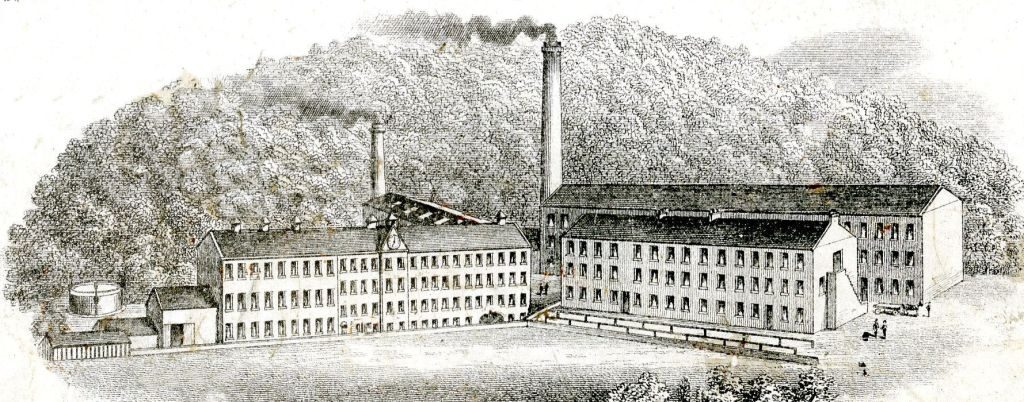
Since its monastic beginnings, the textile industry has shaped Nidderdale’s history and landscape, leaving a legacy still visible in its mill buildings and villages.
As far back as the twelfth century, monks from nearby Fountains and Byland Abbeys reared sheep in Nidderdale, using their fleeces to make wool. Merchants from Italy travelled to Fountains Abbey to inspect the quality of the wool and negotiate trade deals. The abbey even had its own ship to export wool across Europe.
Production of woollen cloth grew in the area with the availability of raw materials, a reliable supply of water and improvements in weaving skills. Many farmers supplemented their farm business by weaving cloth.
By the seventeenth century, Nidderdale’s textile industry shifted from wool to linen made from flax. Rising demand and a growing population led to new spinning mills being built along the Nidd and Washburn rivers in the eighteenth century which harnessed the power of the water to drive machinery.
Textile ‘empires’ developed in the nineteenth century along the River Nidd including New York Mills in Summerbridge and at Glasshouses which included immense mill buildings as well as chapels, schools and cottages for the mill workers.
By the end of the nineteenth century, production of linen was in decline due to the increasing popularity of cotton. Some mills closed and others adapted to meet a growing demand for cord, string and ropes. During the Second World War, some mills were still in use and made parachute cords and string for camouflage nets.
The mills in Nidderdale were closed by the end of the twentieth century but their importance can still be seen in the mill buildings they left behind. The waterwheel from Glasshouses Mill was dismantled and reinstated at Quarry Bank Mill in Cheshire.
Explore it for yourself…
Wander along beside the River Nidd on the Pateley Bridge to Glasshouses Trail before reaching the mill leat, mill pond and impressive mill building itself which has been converted into housing.
Take the Wath Trail which passes Wath Mill, a building dating back to around 1816 and was adapted from a corn mill for textile production. Access inside the mill is not regular but a short history and photographs can be found in this booklet.